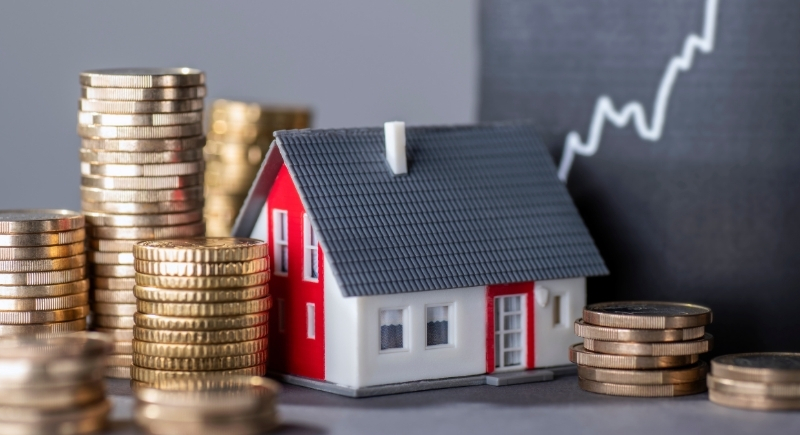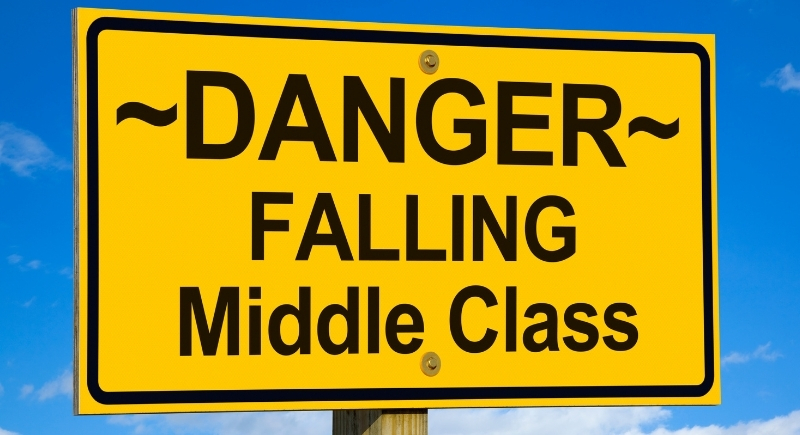10 Ways the Middle Class Is Disappearing in 2026
Once the backbone of the American dream, the middle class is gradually vanishing, and with it, the sense of security it provided for so many. Rising costs, stagnant wages, and economic shifts are pushing families to the brink of financial instability. Here’s why the middle class is becoming harder to hold onto in 2026.
Rising Costs Outpacing Wages

Credit: Canva
Wages have been growing, but they haven’t kept up with inflation. As costs for everything from groceries to utilities continue to rise, many families find themselves in a constant struggle to make ends meet.
Skyrocketing Housing Prices

Credit: Getty Images
Purchasing a home has become a distant dream for many. With skyrocketing interest rates and a shortage of affordable listings, the dream of homeownership is slipping further out of reach. Even renting isn’t an easy choice now, as rent prices rise faster than wages in many areas.
Debt That’s Hard to Shake

Credit: Canva
Many Americans are relying more heavily on credit cards to cover their daily expenses. The high interest rates force small balances to quickly snowball into unmanageable debt. This debt often consumes disposable income that could be allocated toward savings or retirement.
Job Insecurity Looms Large

Credit: Getty Images
In an era of automation and outsourcing, job security is becoming a thing of the past. Many workers are caught in precarious employment situations, characterized by fewer benefits and unstable incomes. Contract and temporary work are on the rise, which has made it increasingly difficult for individuals to establish long-term financial stability.
Healthcare Costs Are Crushing

Credit: Canva
Medical expenses have long been a burden, but for many in the middle class, they’re now an insurmountable barrier. Rising insurance premiums, higher deductibles, and costly out-of-pocket expenses are leaving families with little left to save. A single medical emergency can send even a stable household into financial turmoil.
Student Loans Keeping Families Stuck

Credit: Getty Images
College tuition continues its relentless rise while leaving many families deeply in debt from student loans. Graduates are burdened with loans that take years to repay, and many delay major life milestones, such as buying a home or starting a family, as they focus on repaying their educational debt.
Lifestyle Inflation Strains Budgets

Credit: Canva
As consumerism rises, many are falling into the trap of lifestyle inflation that includes upgrading homes, cars, and gadgets in a never-ending race. Social media doesn’t help, as it creates pressure to match others’ perceived success. This kind of spending takes a toll by draining savings and leaving little room for future security.
Changing Tax Policies Hit Hard

Credit: Canva
The shifting political landscape brings frequent changes to tax policies. Many families find themselves unexpectedly shortchanged. Without consistent tax relief, households are paying more, saving less, and watching their financial security erode gradually.
Regional Inequality Grows

Credit: Canva
Where you live can significantly affect your economic standing. Some regions, particularly major cities, are experiencing a decline in their middle class. Housing prices in these areas have outpaced wage growth, and job opportunities for the average worker are becoming increasingly scarce. Moving to a new location in search of better opportunities often doesn’t lead to improvement for many.
Companies Are Leaving the Middle Behind

Credit: Getty Images
As companies increasingly target the high-end or budget markets, the middle class gets left out. Brands that once catered to the average consumer are focusing on luxury or discount options, ignoring the majority of people who can’t afford to splurge but also don’t want to settle for cheap alternatives.